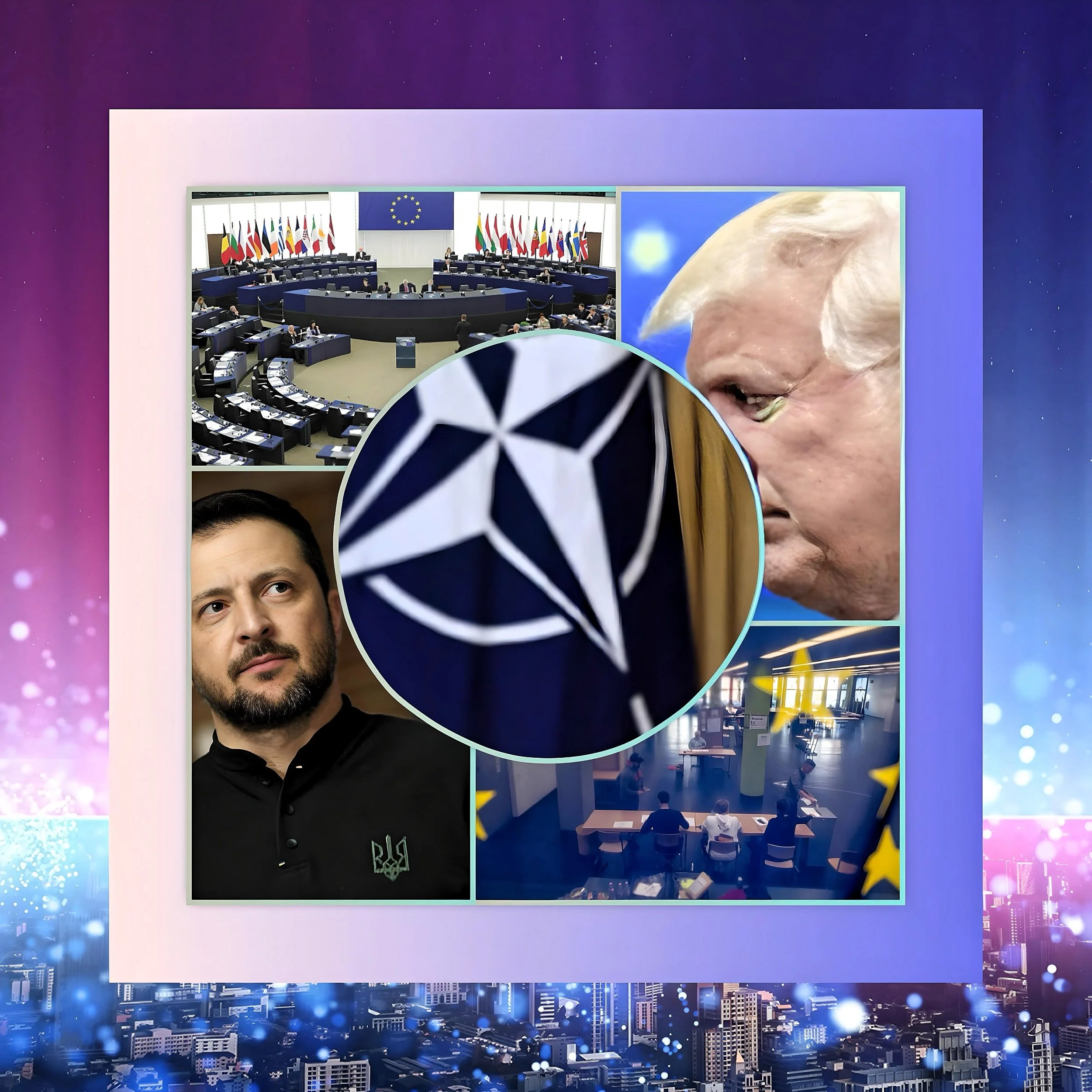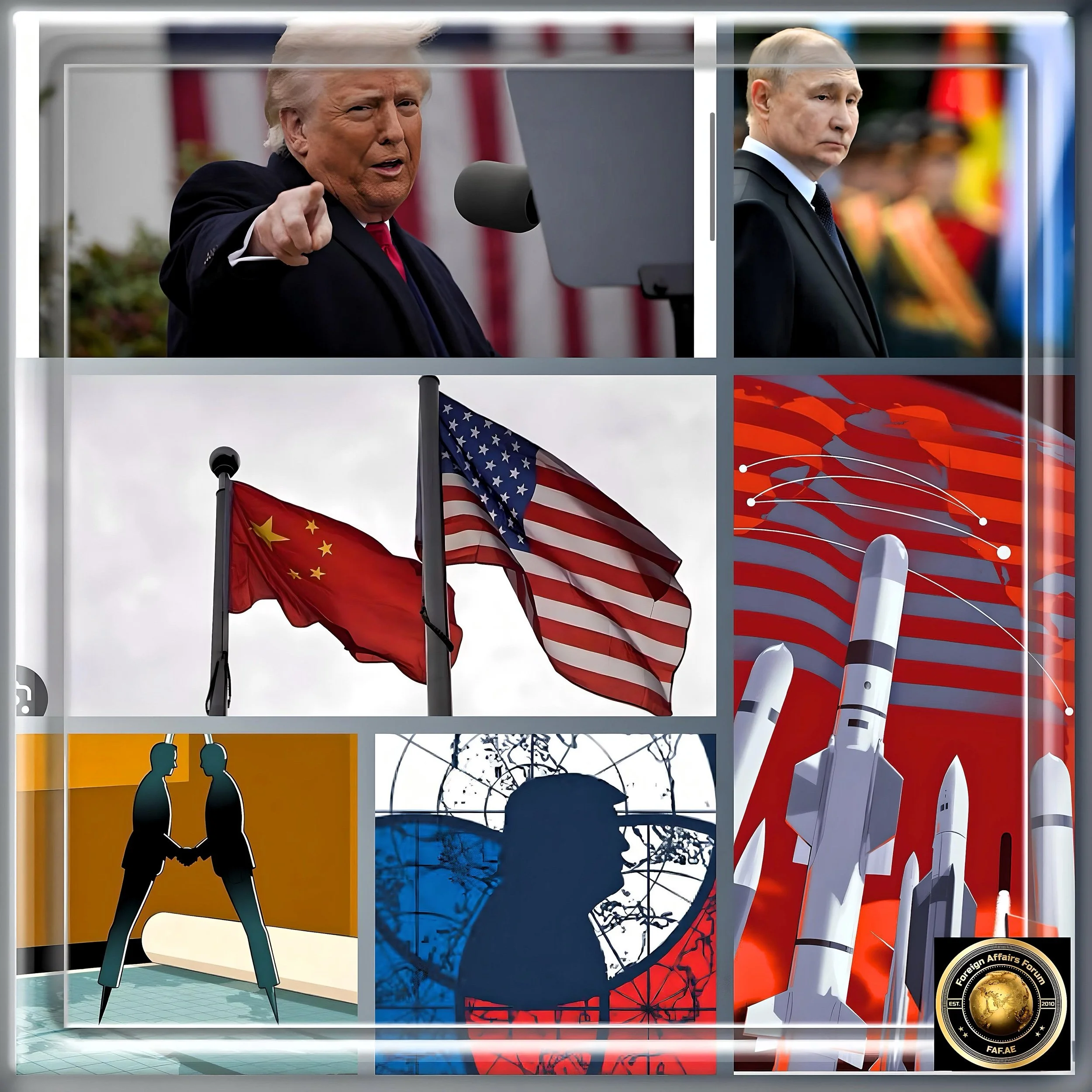The Contradictions of American Power: Alliances, Exploitation, and Broken Promises
Introduction
For nearly eight decades, the United States has nurtured a global framework of alliances and institutions designed to promote international stability.
However, a thoughtful examination of these dynamics reveals specific patterns that raise essential questions regarding economic practices, geopolitical strategies, and the fulfillment of commitments that potentially challenge the perception of the U.S. as a positive global force.
From resource extraction in conflict zones to policies that may inadvertently contribute to global disparities, the disconnect between stated ideals and tangible outcomes prompts a critical reflection on the broader implications of American influence.
Historical Foundations of U.S. Alliances: From Defense to Engagement
The Postwar Alliance Architecture
Established in 1949, the North Atlantic Treaty Organization (NATO) was initially intended as a collective defense mechanism against Soviet expansion.
With twelve founding members, including the United States, the United Kingdom, and France, NATO has since evolved to include 32 members by 2025, encompassing frontline states such as Finland and Sweden.
Additionally, NATO's presence with 750 military bases worldwide allows for rapid response capabilities.
Some observers suggest that this extensive infrastructure has increasingly been viewed as a tool of economic leverage rather than solely to ensure collective security.
For example, the 1951 ANZUS Pact with Australia and New Zealand established a framework wherein the United States gained basing rights in exchange for security assurances—dependencies that are still evident today.
Covert Alliances and Collaborative Efforts
In addition to formal agreements, the U.S. has engaged in discreet partnerships to promote strategic objectives.
The clandestine collaboration between Sweden and the U.S. from 1949 to 1989 facilitated intelligence operations related to the Soviet Union.
Similarly, the Central Treaty Organization (CENTO) from 1955 to 1979 aimed to address geopolitical challenges in the Middle East; however, these efforts sometimes resulted in instability under the guise of preventing communist influence.
In many instances, these arrangements prioritized access to resources over enhanced democratic governance, as demonstrated by the 1954 Mutual Defense Assistance Agreement with Pakistan, which secured U.S. military influence in the region while not fully addressing local governance issues.
Economic Engagement Through Trade and Assistance
Structural Adjustment and Market Access
From 1980 to 2020, the World Bank and International Monetary Fund (IMF), institutions that reflect significant U.S. influence, implemented structural adjustment programs in 76 developing nations.
These strategies often advocated for the privatization of public assets and trade liberalization, which provided opportunities for U.S. corporations to acquire valuable resources at competitive prices.
A notable case is Nicaragua in the 1980s, where attempts at land reform by the Sandinista government led to U.S. actions to influence World Bank loan decisions, ultimately contributing to economic instability and escalating conflicts.
Agricultural Subsidies and Trade Dynamics
Despite commitments made during the 1994 Uruguay Round, many developed nations continued to provide agricultural subsidies that exceeded $400 billion annually—six times their foreign aid expenditures.
Notably, U.S. cotton subsidies totaled $32.9 billion from 1995 to 2020, significantly impacting West African producers and resulting in estimated losses of $43 million annually for Mali due to reduced export opportunities.
Concurrently, tariffs imposed on textiles from developing countries averaged 15% to 30%, hindering industrial growth in nations such as Bangladesh and Cambodia.
Resource Extraction in Conflict Zones
The Ukrainian Minerals Discussion
The proposed U.S.-Ukraine minerals agreement for 2025 serves as a reminder of the complex dynamics involved in wartime alliances.
The draft agreement indicated a requirement for 50% ownership of Ukraine’s rare earth deposits and a 50% share of revenues from oil, gas, and port operations—reflecting efforts to offset the substantial military aid provided, which amounts to $113 billion.
Workers at the Irshansk titanium mine face challenges like inconsistent electricity supply and the threat of Russian bombardments. At the same time, the U.S. continues to advocate for extraction quotas linked to debt obligations.
Simultaneously, discussions with Russian authorities regarding post-conflict mineral access have raised ethical questions, particularly given the ongoing occupation of Ukrainian territories.
Congo’s Mineral Challenges and Corporate Accountability
The Democratic Republic of Congo’s recent lawsuit against Apple underscores ongoing issues of mineral exploitation.
Despite United Nations findings that indicated a strong association between 85% of eastern Congo’s tantalum mines and armed groups, U.S. technology firms have still sourced materials through intermediaries in Rwanda.
This practice has resulted in militias earning an estimated $300 million annually.
Furthermore, existing legal frameworks, such as the 2010 Dodd-Frank Act, have inadvertently prevented important supply chain disclosures regarding “conflict minerals” processed in third countries like Rwanda.
Unmet Commitments to Developing Nations
The 0.7% Aid Commitment
The failure of high-income nations to fulfill the United Nations' 1970 aid target has led to a significant shortfall of $5.7 trillion over five decades—sufficient funding to support universal healthcare initiatives in 45 low-income countries.
The United States contributes approximately 0.18% of its Gross National Income (GNI) annually, with about 63% allocated through military contractors rather than directly supporting development projects.
WTO and the Challenges of Global Trade
The collapse of the Doha Development Round in 2008 highlighted the ongoing challenges of trade protectionism in wealthier nations.
Developed countries continue to implement average agricultural tariffs of 52% against those in poorer nations, further complicated by the influx of subsidized exports. For instance, EU beef subsidies of €1.50/kg have been shown to undercut Kenyan producers by 37%.
Additionally, stringent intellectual property regulations have imposed costs on India estimated at $45 billion annually due to inflated drug prices, thereby limiting access to crucial medications for conditions such as HIV.
Reassessing the “Good Neighbor” Concept
From Monroe to Contemporary Strategies: Continuities in Influence
President Roosevelt's 1933 Good Neighbor Policy shifted away from military interventions, prioritizing economic engagement through initiatives such as the 1934 Reciprocal Trade Agreements Act.
This legacy continues to manifest in modern agreements, such as the 2019 defense pact between the U.S. and Brazil, which facilitated mining opportunities in the Amazon for companies like Chevron while fostering collaborative efforts on counterterrorism.
Alliance Burden-Sharing
In recent years, the United States has encouraged NATO allies to enhance their defense spending to 2% of GDP. Simultaneously, the U.S. plans to expand its military budget to $1.1 trillion by 2025—outpacing the combined military expenditures of the following 11 nations.
This dialogue around burden-sharing may sometimes obscure underlying dynamics, as most of NATO's arms acquisitions benefit U.S. contractors, resulting in substantial support for the domestic defense industry.
Conclusion
Balancing Power and Principles
A review of historical precedents indicates that U.S. alliance-building has often functioned as a mechanism for reinforcing geopolitical dominance.
From the annexation of the Philippines in 1898 to contemporary agreements regarding resource extraction, the influence of power has persisted. Although institutions such as the World Bank and NATO provide valuable public services, their alignment with U.S. corporate and strategic interests raises concerns about the perpetuation of global hierarchies.
Addressing these complexities necessitates policy revisions and a thoughtful reevaluation of longstanding frameworks embedded in trade agreements, alliance dynamics, and financial institutions.
Until meaningful reforms are implemented, an unwavering pursuit of dominance may continue to challenge the American administration's promise.






